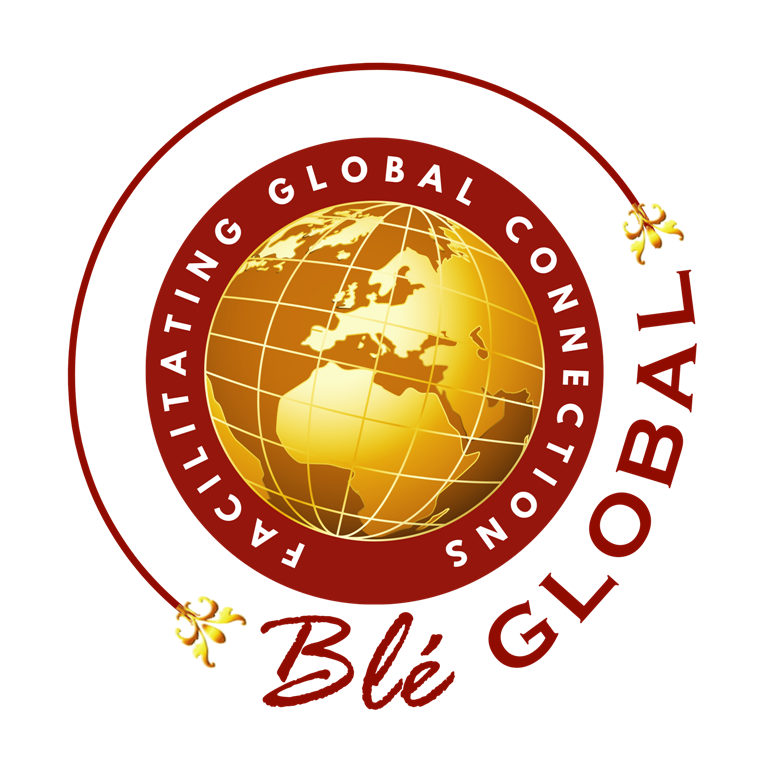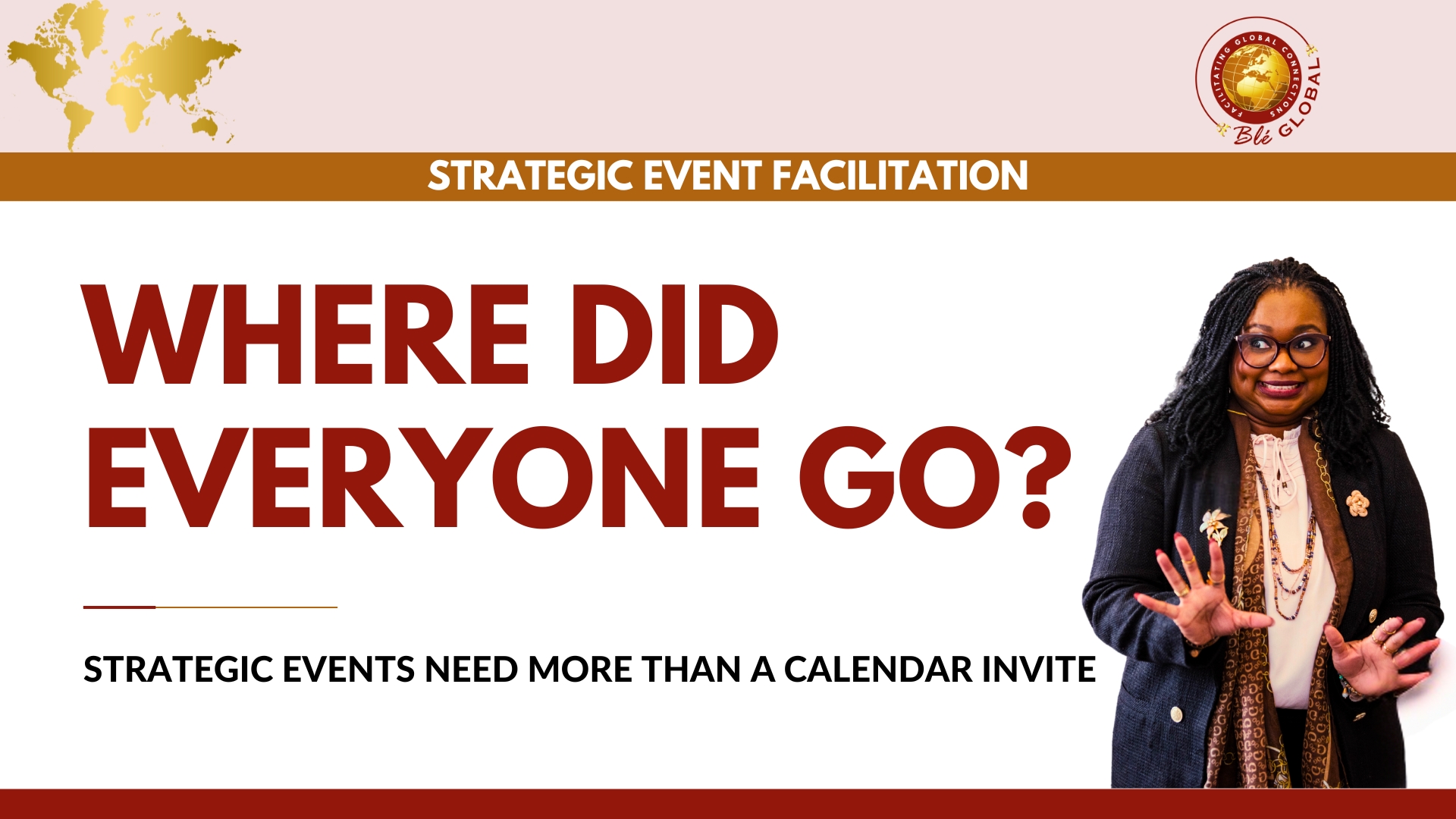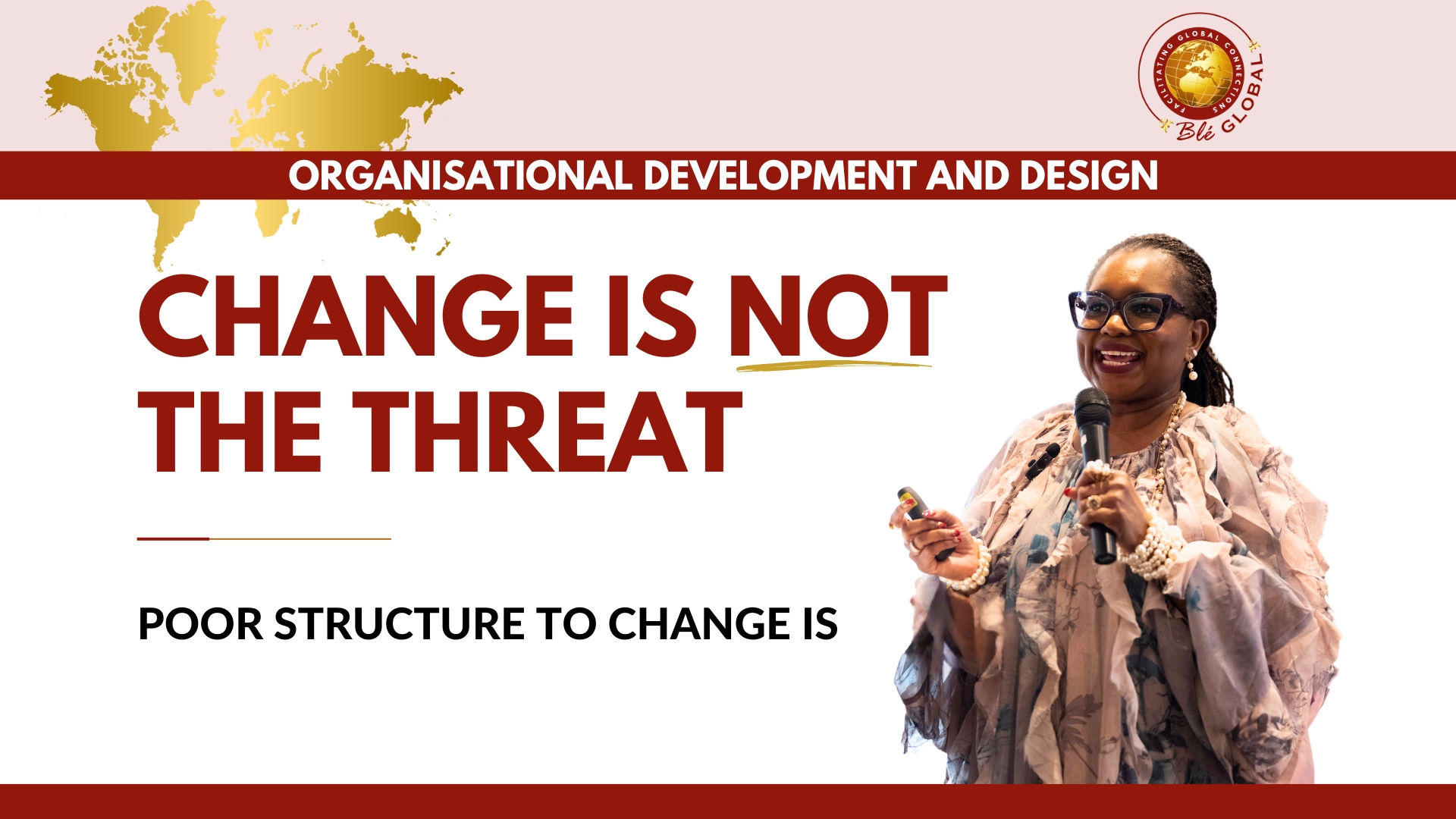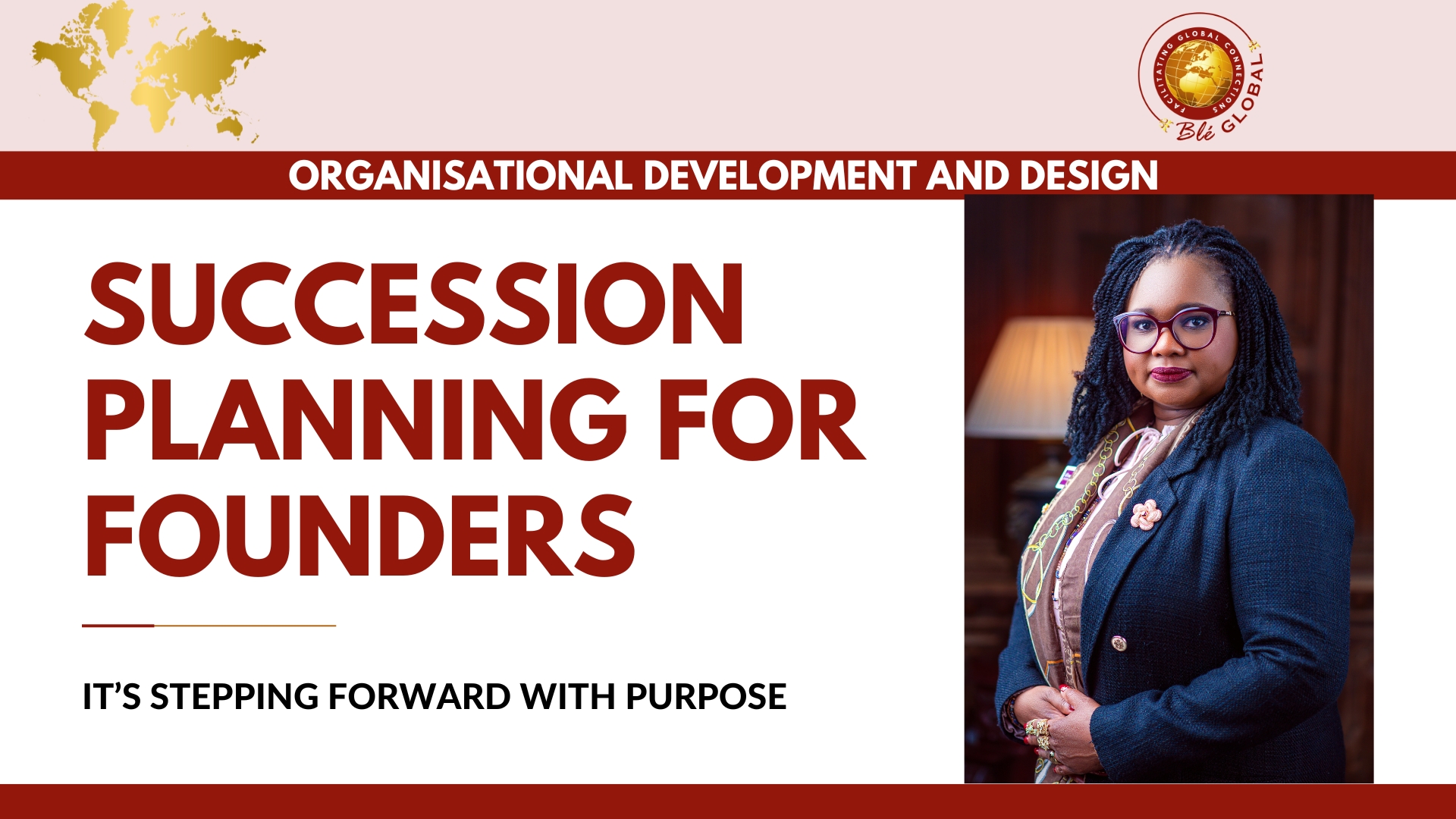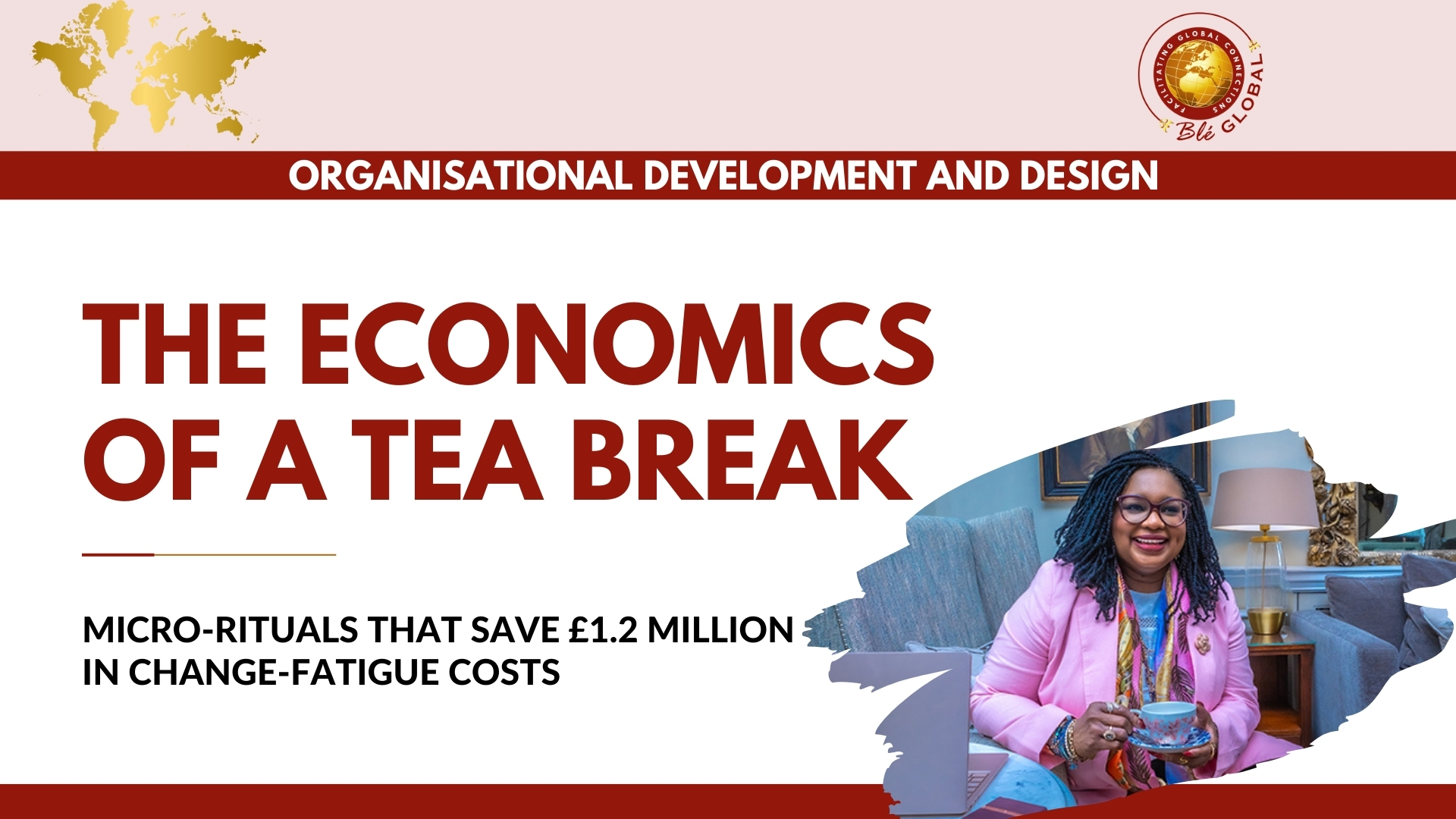Change has always been part of business. Strategy evolves. Markets shift. New systems are introduced.…
Dwindling Event Attendance? Let’s Bring People Back to the Table
Nothing feels emptier than rows of unused chairs or a gallery of silent avatars. You planned a session to move the strategy forward, yet half the invite list never logged in and many cameras stayed off. It is tempting to blame screen fatigue or tight travel budgets, but the cause usually runs deeper. The people you need most are drowning in digital noise, and your event has not convinced them it is worth their precious attention.
I work with boards and founders who break new ground every day, yet they still face this challenge. The good news is that participation can rebound when we design gatherings with the same care we give to any major investment. When we treat events as an Organisational Development and Design exercise, attendance rises, energy returns and decisions land on time.
Why People Step Back
Screen fatigue plays a part, and diaries keep getting busier, but three shifts have changed the rules of engagement.
Information overload: Artificial intelligence and personalised feeds supply a constant stream of quick answers. Leaders ask themselves why they should give an hour when they can skim a summary in seconds.
Content sameness: Generative tools have made polished slides easy to produce. Many sessions sound alike, so even well intended webinars feel interchangeable.
Sharper opportunity cost: Hybrid teams run lean and every hour away from delivery must pay its way. If the value is not clear, people choose headlines over handshakes.
Four Design Moves That Win Attention
1. Clarify the live value
State what participants will gain that no recording or summary can match. That might be collective problem solving, the chance to shape a decision, or access to voices rarely gathered in one room. Use survey data or past feedback to confirm why people say yes.
2. Build true engagement
Replace long slide shows with interactive tasks and guided discussions. In virtual settings choose tools that demand contribution. People learn by doing, so design the session so that everyone is part of the work.
3. Shape the journey from first invite to final action
Create short pre work that sparks curiosity. Send immediate takeaways after the event, linking responsibilities to timelines. When the whole journey flows, people feel their time was well spent.
4. Measure what matters
Count more than logins. Track how decisions progress and how quickly actions follow. Pair qualitative feedback with hard indicators such as project acceleration. This keeps the focus on impact, not vanity metrics.
A Culture That Welcomes Participation
High impact events grow inside cultures that value contribution. Leaders who model engagement set the tone. When structure, behaviour and purpose line up, attendance becomes the norm, not the battle. My work often begins with an Event Strategy Audit to see whether the events is set to deliver maximum value. The insights guide simple design tweaks that bring people back willingly.
Ready to Turn the Tide?
An empty seat is more than a nuisance. It signals that structure and value need a refresh. If you are ready to transform your strategic gatherings from logistical headaches into moments that move the business, let us talk.
Share your biggest event challenge in the comments or book a confidential conversation here: https://bit.ly/StructureCall
Prefer a quick sense-check first? Take my complimentary Event Strategy Audit to see how your current approach measures up: https://bit.ly/EventStrategyAudit
Author: Dr. Blessing Enakimio
Blé Global - Facilitating Global Connections
